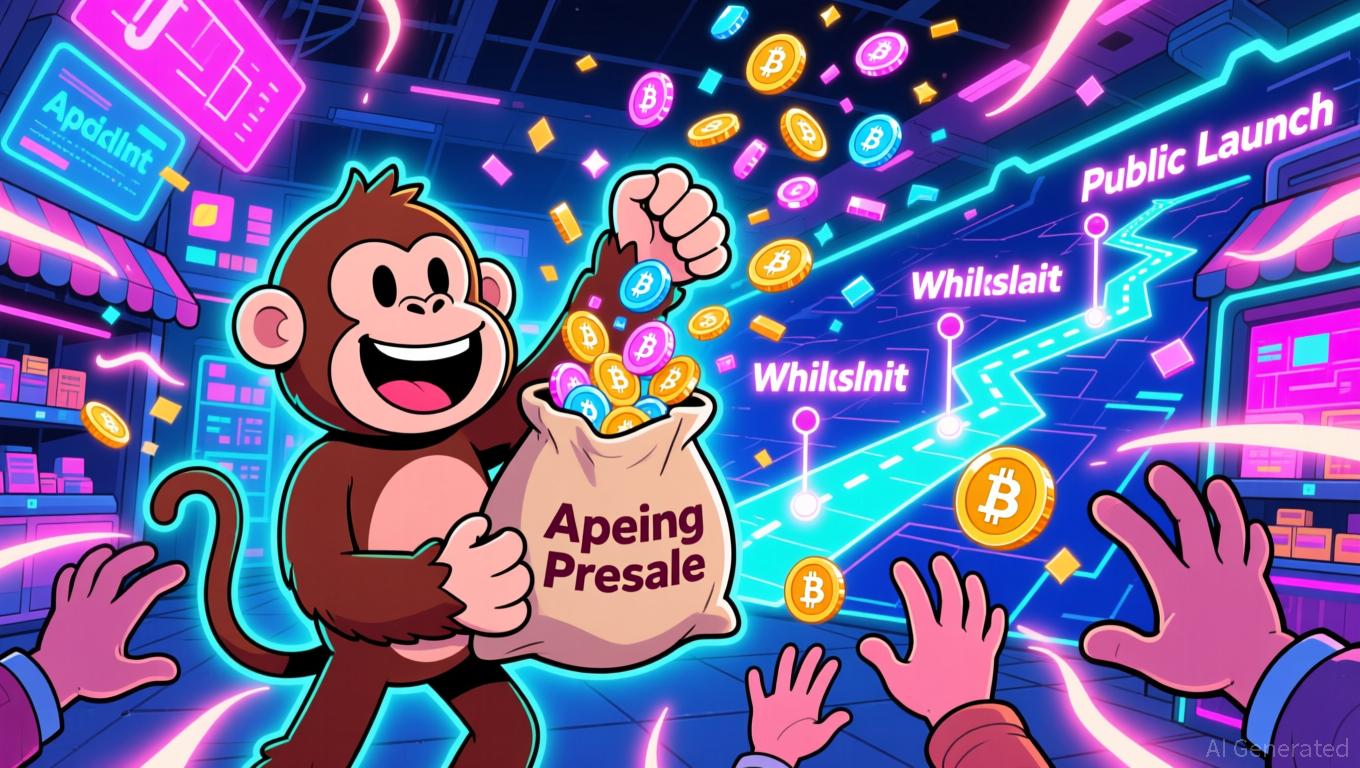What Led to the Latest Bitcoin Price Drop?
- Bitcoin's late 2025 crash stemmed from $3B in ETF outflows and Fed rate uncertainty, triggering a 7.35% price drop. - Institutional exits from IBIT/GBTC contrasted with earlier Q3 2025 inflows that pushed BTC to $126,000, revealing shifting risk appetite. - Fed's 3.75%-4% rate hold and "mildly restrictive" policy eroded crypto confidence, accelerating capital flight to safer assets. - The crash highlighted crypto's growing dependence on macroeconomic cycles and institutional sentiment for price stability.
Institutional Withdrawals: The Spark Behind the Decline
The immediate cause of Bitcoin’s sharp fall was a surge in institutional withdrawals from U.S. spot Bitcoin ETFs. By November 2025, these investment vehicles had seen nearly $3 billion in net outflows, with BlackRock’s IBIT and Grayscale’s GBTC suffering the largest losses. On November 20th alone, IBIT recorded $355 million in outflows, while GBTC saw $199 million leave,
This reversal was especially striking compared to earlier in 2025, when
Macroeconomic Instability: Weighing on Risk Assets
While institutional selling had a direct effect on Bitcoin’s price, broader economic factors likely made the situation worse.
Additionally, diminishing hopes for U.S. rate cuts in 2025 created a negative environment for Bitcoin, which had previously thrived under looser monetary conditions.
Conclusion: Sentiment and Structure Collide
The Bitcoin crash in late 2025 resulted from a combination of institutional actions and economic headwinds. Outflows from ETFs put direct pressure on BTC prices, while the Federal Reserve’s reluctance to ease monetary policy fostered a climate of caution. These developments underscore the growing links between traditional financial markets and the crypto sector—a relationship that will likely shape Bitcoin’s future.
For those investing in Bitcoin, the takeaway is unmistakable: the cryptocurrency’s value is now more closely tied to global economic trends and institutional attitudes. As the market processes these shifts, the outlook will depend on whether confidence in ETFs and central bank decisions can help restore risk appetite.
Disclaimer: The content of this article solely reflects the author's opinion and does not represent the platform in any capacity. This article is not intended to serve as a reference for making investment decisions.
You may also like
Dogecoin Update: Investors Rush to Presale Amid Waning Meme Coin Hype
- Crypto investors shift focus from Dogecoin and Shiba Inu to Apeing ($APEING) presale, offering 10,000% ROI potential via whitelist access. - Apeing’s $0.0001 presale price contrasts with stagnant DOGE ($0.075) and SHIB ($0.000007), reflecting market preference for first-mover advantages. - Apeing’s scarcity-driven model and viral community buzz mirror past meme coin success, but analysts warn sustainability depends on execution and use cases. - Security risks in DeFi (e.g., Aerodrome Finance attack) high

Bitcoin Updates: Macroeconomic Trends and Institutional Interest Help Ease Concerns Over Crypto Market Downturn
- Macro analyst Lyn Alden downplays major crypto crashes, citing absent euphoria and Bitcoin's macroeconomic/institutional drivers over halving cycles. - Contrasting bearish forecasts (e.g., 70% BTC drop by Sigma Capital), Alden emphasizes market outcomes rarely reach extreme investor fears. - BTC's $85k rebound post-$125k peak and 22% 30-day drop highlight volatility, with Alden cautioning against assuming automatic bull markets. - Institutional adoption and Fed policy shifts (QT cessation, global stimulu

ICP Value Jumps 30% Following Significant Network Update: Enhanced On-Chain Governance and Layer 1 Expansion Drive DeFi Advancement
- ICP's token price surged 30% in 2025 due to transformative upgrades in on-chain governance and Layer 1 scalability. - Fission and Knot upgrades enabled 1,200+ TPS with reverse gas model, outperforming Ethereum's scalability limitations. - Active Liquid Democracy governance and Neuron Fund attracted 2,155+ developers, boosting TVL by 22.5% in one day. - Price gains correlate with DeFi adoption, institutional staking, and cross-chain integrations via Chain Fusion technology.
Solana News Update: Major Investors Place Significant Bets on Solana ETFs Amid 30% Price Drop, Challenging the Strength of $130 Support
- Solana's ETFs (BSOL/FSOL) drew $476M in 17 days despite SOL's 30% price drop to $130, signaling institutional confidence. - $130 support level shows buying pressure with RSI rising to 50, though $160 EMA remains a key reentry target for bulls. - On-chain growth (18% active address rise) and projects like GeeFi reinforce Solana's infrastructure, but $140 resistance remains fragile. - Mixed futures signals (5% higher OI, positive funding rates) highlight uncertainty, with $120 as next potential downside ri
